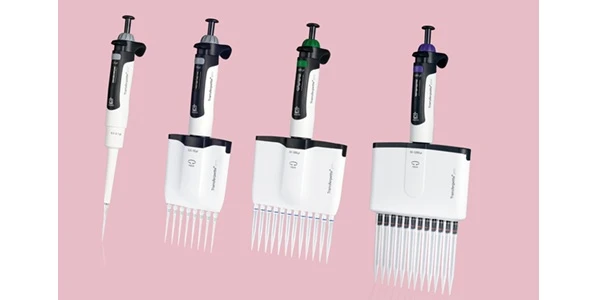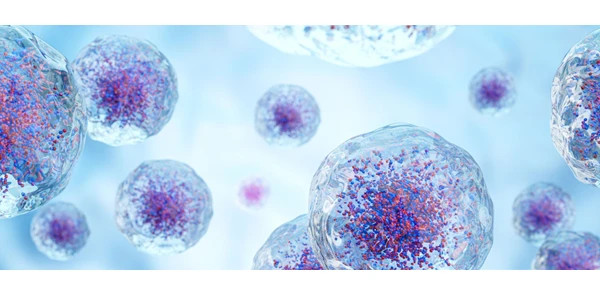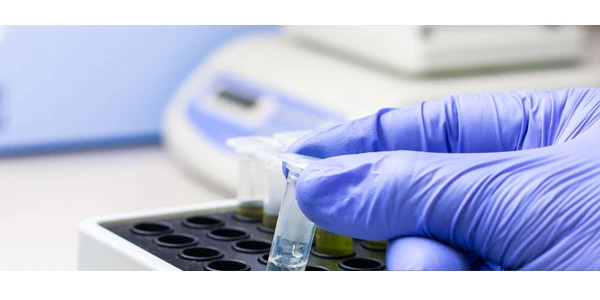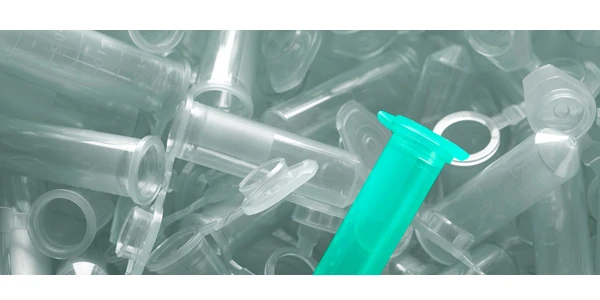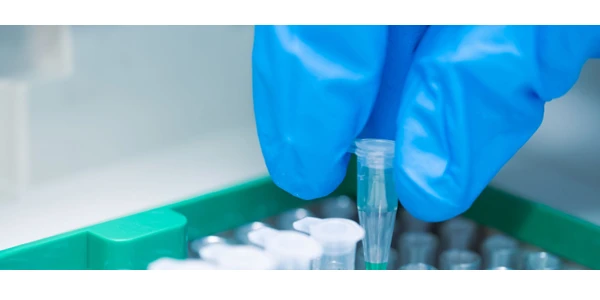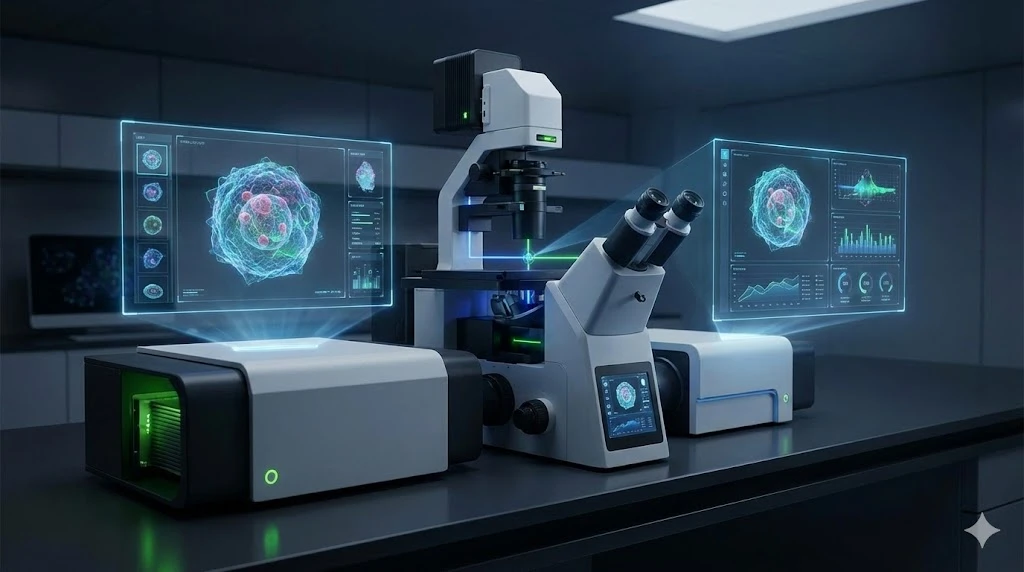The Latest Analytical Solutions to Track the Growing Spread of PFAS Compounds
Advanced instruments and sample prep solutions for PFAS monitoring in environmental, materials testing, and food safety applications
The crisis of PFAS infiltration has reached epic proportions. PFAS compounds are now found worldwide in environmental reservoirs, drinking water, the atmosphere, animals, and even in us. The rapid rate of PFAS dissemination highlights the importance of developing improved PFAS detection technologies. New approaches towards PFAS analysis include sample prep, LC-MS, GC-MS, and additional platforms that elevate PFAS measurement sensitivity and accuracy to levels beyond previous approaches. These new technologies are critical gateways toward a better understanding of how PFAS compounds affect our environment, our food, and our bodies.
The Problem
PFAS (short for Per- and Polyfluoroalkyl substances) are a large, complex group of synthetic chemicals used in a wide variety of common applications. Since the 1940s, PFAS chemicals have been used in everything from non-stick coatings in cookware to clothing, carpets, and firefighting foam1. Importantly, some PFAS compounds are known as ‘forever chemicals’ as they break down very slowly and therefore accumulate in the environment2. Although long-term studies are lacking (due in part to the fact that PFAS persistence has only more recently been identified), elevated PFAS concentrations (over background levels) may have a number of adverse health risks. Therefore, measuring their presence and understanding their effects on humans and animals are of major importance.
Environmental Testing
There are thousands of PFAS chemicals found not only in consumer products but in commercial and industrial sources as well. Because of this widespread use, they can now be found in water, air, soil, and fish at locations throughout the world3. Understanding where these chemicals enter the environment, and the routes by which they disseminate, is important in helping to stop this flow at the source.
Food Safety Testing
Of course, food production is intimately connected with the environment. Agricultural processes may lead to accumulation of water- or soil-based PFAS contamination in crops. Feed-based PFAS buildup may affect livestock as well. These reservoirs can potentially make it through the food processing chain and eventually to our tables. The global nature of food production and export means PFAS contamination in localized areas may lead to a much wider problem throughout the worldwide food supply chain. For these reasons, advanced PFAS testing solutions will be crucial to help ensure food safety at many points in the cycle of production.
Materials Testing
Whether manufactured from raw materials or extracted from the environment directly, modern materials used in buildings, industrial uses, and consumer goods may carry PFAS contamination. Many materials have already been earmarked as potential PFAS sources. For instance, PTFE—a common polymer used in laboratory consumables such as sample vial caps—is a fluoropolymer that can introduce PFAS contamination into the very samples and instruments being used to measure PFAS compounds. This applies to a range of sample prep columns, pipette tips, and many other supplies as well. Understanding the prevalence of PFAS contamination in materials and consumables is key to developing ways to control and measure the compounds.
Solutions
The PFAS problem has served as a driver of technological development, helping to steer the creation of state-of-the-art testing platforms.
In developing new testing technology, three main factors must be addressed. Background PFAS contamination must be removed from all upstream sample contact points—consumables, surfaces, and even the water and chemicals. Robust sample prep and analysis workflows must be implemented to prevent measurement errors and inconsistencies. Instrument sensitivity must be maximized to capture as much analytical data as possible. Data capture is critical in helping to establish guidelines and safe use thresholds once the effects of PFAS compounds are better understood.
Instrument manufacturers are launching a growing number of analytical solutions that address these challenges. These include sample prep solutions such as analytical standards and PFAS-free consumables. Advanced LC-MS and GC-MS methods and software solutions are also now available to help make sense of rich data sets and to identify PFAS signatures in an expanded number of matrices.
Sights are set high on helping to develop analytical solutions to the complex problem of PFAS contaminants in the environment. New products, ranging from consumables to instrument platforms, have been developed by many companies.
Consumables for PFAS Analysis
GLS Sciences offers a series of products to help capture and prepare samples, including:
- The Air Sampler for PFAS (FM4), a Low Volume Air Sampler that can be used to analyze PFAS particulates in the air, which has a configuration with optimized materials that allows multiple PFAS to be detected in a single sampling run
- The Delay Column for PFAS, which is packed with high-purity activated charcoal, allowing it to retain contaminants originating from the mobile phase or the HPLC system
- High-purity polypropylene vials for use as sample blanks
PFAS Sample Extraction
CEM offers automated solutions for extraction from a variety of sample backgrounds, featuring:
- The EDGE PFAS automated extraction system (shown right), which offers faster speed than traditional Soxhlet and better automation than QuEChERS and other complicated systems
- Importantly, the PFAS system has been made PFAS-free, enabling rapid extraction of compounds from many sample types without the threat of contamination
LC Columns, Reference Standards, and Sample Prep Guidance
Restek has a methods-based guide to PFAS Testing, covering:
- Best practices suggest evaluating the testing system to identify any points of PFAS contamination
- Everything from sample vials, solid-phase extraction products, LC plumbing, and solvents and reagents should be screened
- A range of columns and reference standards according to the sample matrix and the method (EPA, ISO) that is planned for testing
LC-MS Instrument Platforms
The EPA has established draft methods for PFAS levels in various samples using specific analytical testing methods. For instance, EPA Method 533 for analysis of select PFAS (25 compounds) in drinking water specifies the use of anion exchange solid phase extraction and LC-MS/MS workflows. EPA Method 1633 for analysis of PFAS in aqueous, solids, biosolids, and tissue samples specifies the use of isotopically labeled standards with LC-MS/MS in multiple reaction monitoring mode (MRM).
Instrument manufacturers offer systems that have been configured to meet or exceed the regulated PFAS concentrations as stipulated by the EPA methods.
Waters offers an advanced workflow solution for PFAS testing, from sample preparation to proficiency testing, including:
- PFAS LC and Oasis WAX SPE kits that can be used to protect the workflow from contamination and control possible interferences, compatible with EPA Method 533 and EPA Method 1633 workflows
- The Xevo TQ Absolute, which is suited for MS/MS analysis in MRM mode and achieves the sensitivity needed to reach beyond allowable PFAS limits
Shimadzu has a variety of analytical solutions, including standardized methods following EPA 533 and 1633 guidelines, such as:
- Triple Quadrupole LC-MS/MS platforms, including the 8060, 8050, and 8040 instruments, which provide the flexibility and sensitivity required for demanding PFAS testing workflows
- Smaller single quadrupole units, including the 2050 and 2020, which can be used for fast analysis of samples in testing workflows that may not have the need for comprehensive fragmentation and characterization
Agilent offers a portfolio of analytical testing platforms and software solutions to cover all aspects of PFAS testing, featuring:
- The Agilent 6470 triple quadrupole LC-MS/MS system, which can achieve the performance metrics of EPA Method 533 and EPA Method 1633, including the 1290 Infinity II LC frontend and multiple components for eliminating background PFAS interferences
- The Agilent 6495 TQ LC-MS/MS with Infinity II 1290 and Bond Elut PFAS WAX SPE cartridge (shown below), which can achieve performance that exceeds EPA 533 requirements and leverages an intelligent optimization algorithm (Mass Hunter Source Optimizer) to define ideal source conditions for EPA 533 compounds with 2.5 - 7-fold increases in PFAS detection sensitivity
- An eMethod that is designed to be a step-by-step workflow guide and resource for selected consumables and supplies, which can be used for the separation and reliable detection of 100 native and isotopically labeled compounds in drinking water and wastewater or groundwater
There are many additional solutions available according to your desired sample type and testing method requirements.
What is clear from the validation of EPA, ASTM, ISO, and other methods on these instrument platforms is that the LC-MS/MS detection limits outperform that method's requirements in most cases. The sensitivity of the instruments goes far beyond what is necessary for testing guidelines. Therefore, the challenge is not instrument sensitivity. Rather, the problem is contamination and interferences from the sample collection, preparation, and instrument workflows.
Refinement of the sample preparation and process quality control improvements will continue to help these instruments achieve what is certain to be changing regulatory requirements.
Outlook
The US Environmental Protection Agency (EPA) has prioritized key objectives for understanding more about the impact of PFAS chemicals on our environment3. These include:
- To better and more efficiently detect and measure PFAS in air, water, soil, and wildlife
- To identify to what extent humans are exposed to PFAS
- To understand how harmful PFAS are to humans and the environment
- How to remove PFAS from drinking water
- How best to manage and dispose of PFAS
Once analytical testing solutions have solved the ability to determine accurate and precise levels, the stage should be set to acquire the right data to define actionable limits and enact remediation strategies.
The emergence of PFAS compounds in a growing number of environmental reservoirs is unfortunate. The right steps are being taken to confront the issue, however, with instrument manufacturers leading the way with cutting-edge testing solutions.
References
1. https://www.niehs.nih.gov/health/topics/agents/pfc/index.cfm
